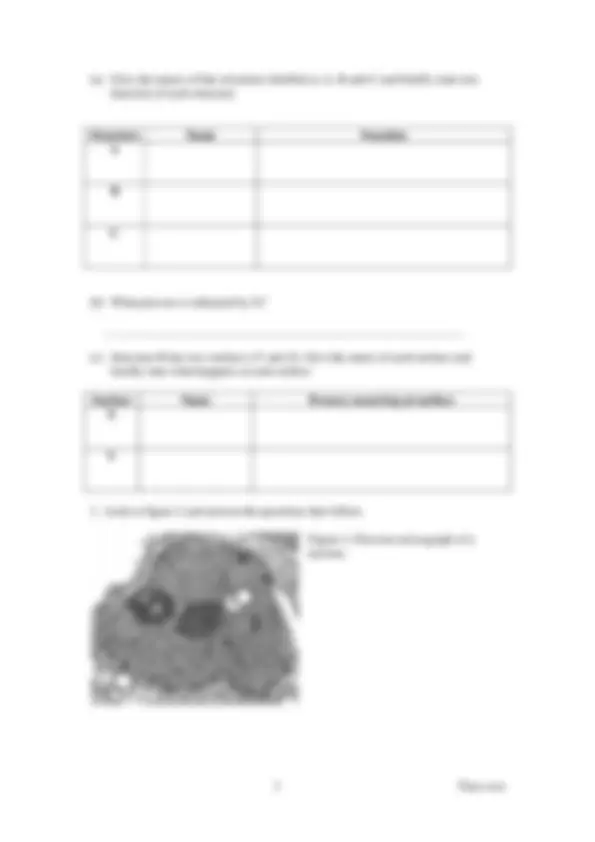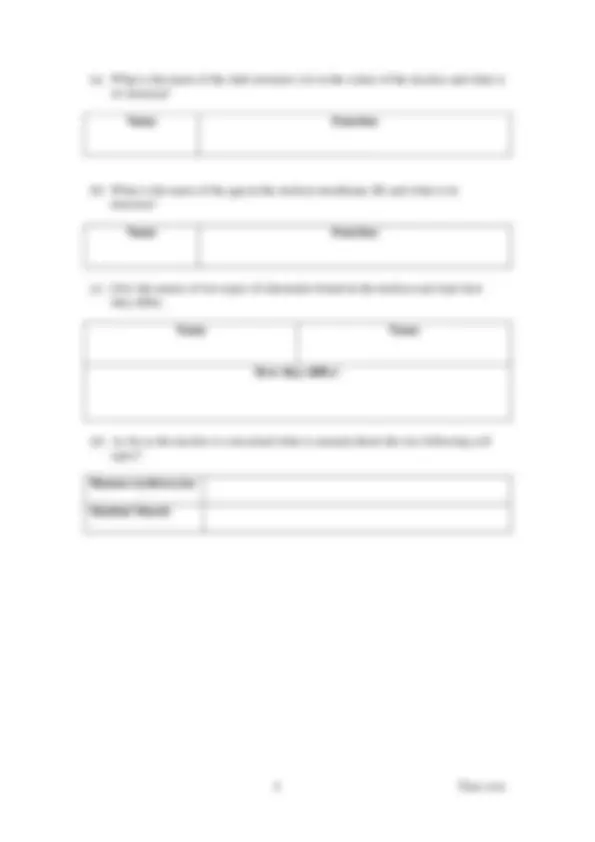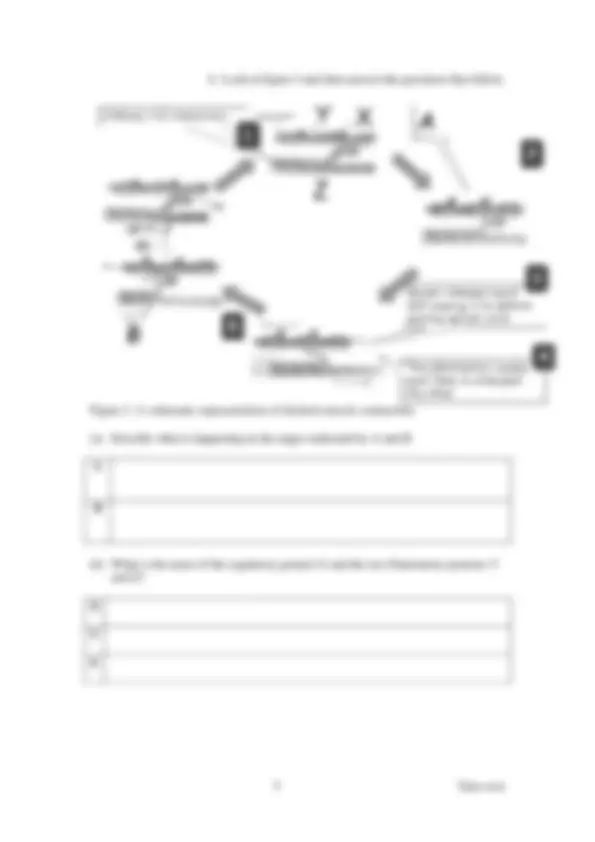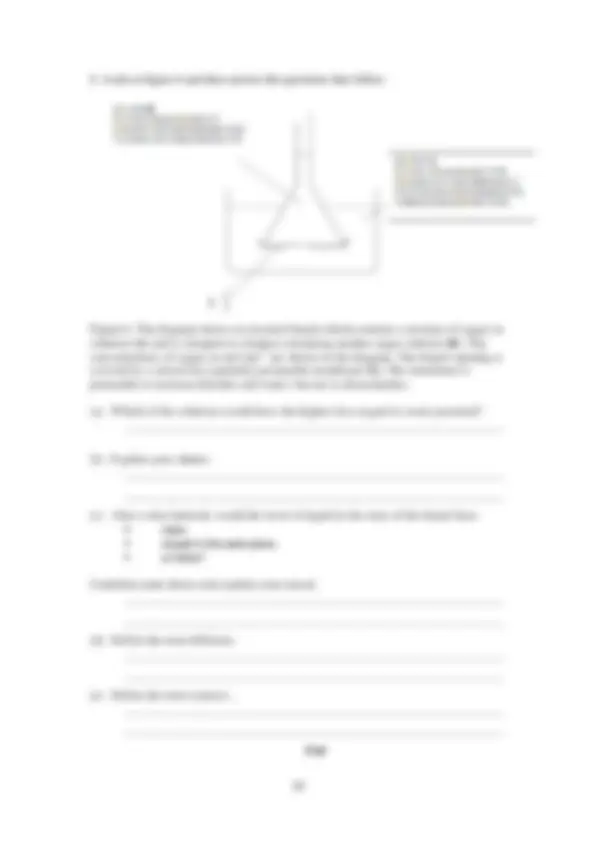








Study with the several resources on Docsity

Earn points by helping other students or get them with a premium plan


Prepare for your exams
Study with the several resources on Docsity

Earn points to download
Earn points by helping other students or get them with a premium plan
Community
Ask the community for help and clear up your study doubts
Discover the best universities in your country according to Docsity users
Free resources
Download our free guides on studying techniques, anxiety management strategies, and thesis advice from Docsity tutors
Cell Theory, Main Principles, Endomembrane System, Typical Animal Cell, Centre of the Nucleus, Types of Chromatin, Skeletal Muscle Contraction, Regulatory Protein X, Solute Movement are some points from questions of Biology of the Cell subject.
Typology: Exams
1 / 10

This page cannot be seen from the preview
Don't miss anything!







Time allowed — 2 hours
1 Enter your name in the space provided at the top right of this page. If you wish to conceal your identity while the answers are being assessed, fold over and seal down the top right-hand corner as shown (adhesive strips are provided).
2 Your reference/identification number should be written in the space provided at the bottom of the page.
3 Answer all of the questions in the spaces provided. Each question is worth the same number of marks and it is recommended that you spend 10-12 minutes on each question.
4 This question paper thus becomes the answer book and it must be handed in complete. Make sure your name is on it and, in the case of anonymous marking, your reference/identification number.
Difference 1
Difference 2
Difference 3
(b) Briefly state the three main principles of the ‘Cell Theory’
Principle 1
Principle 2
Principle 3
Figure 1. A diagram of the endomembrane system of a typical animal cell.
(a) What is the name of the dark structure (A) in the centre of the nucleus and what is its function?
Name Function
(b) What is the name of the gap in the nuclear membrane (B) and what is its function?
Name Function
(c) Give the names of two types of chromatin found in the nucleus and state how they differ.
Name Name
How they differ:
(d) As far as the nucleus is concerned what is unusual about the two following cell types?
Human erythrocytes
Skeletal Muscle
Figure 3. A schematic representation of skeletal muscle contraction.
(a) Describe what is happening in the stages indicated by A and B
A
(b) What is the name of the regulatory protein X and the two filamentous proteins Y and Z?
(a) Give the names and functions of the structures labelled A and B.
Name Function A
(b) What is the name of layer C
(c) Give the names of two proteins commonly found in the ECM and state their functions.
Name Function
Give one function of the integrin group of proteins.
Figure 5. Diagrammatic representation of a chloroplast
(a) Give the names of the structures labeled A, B, C and D.
Structure Name Structure Name
(b) What are the main functions of:
The mitochondrion
The chloroplast
(c) List 2 differences between a mitochondrion and a chloroplast (other than their function)
(d) List 2 similarities between a mitochondrion and a chloroplast (other than their function)
Figure 6. The diagram shows an inverted funnel which contains a mixture of sugars in solution (A) and is clamped in a beaker containing another sugar solution (B). The concentrations of sugars in mol dm–^3 are shown in the diagram. The funnel opening is covered by a selectively (partially) permeable membrane (S). The membrane is permeable to monosaccharides and water, but not to disaccharides.
(a) Which of the solutions would have the higher (less negative) water potential?
(b) Explain your choice.
(c) After a time interval, would the level of liquid in the stem of the funnel have risen, stayed in the same place, or fallen?
Underline your choice and explain your reason.
(d) Define the term diffusion.
(e) Define the term osmosis.
End